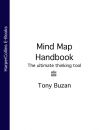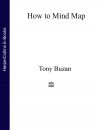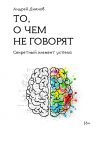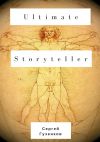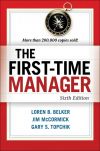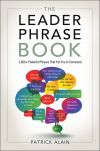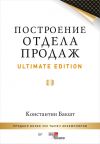Правообладателям!
Представленный фрагмент книги размещен по согласованию с распространителем легального контента ООО "ЛитРес" (не более 20% исходного текста). Если вы считаете, что размещение материала нарушает ваши или чьи-либо права, то сообщите нам об этом.Читателям!
Оплатили, но не знаете что делать дальше?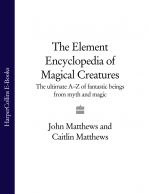
Текст бизнес-книги "The Element Encyclopedia of Magical Creatures: The Ultimate A–Z of Fantastic Beings from Myth and Magic"
Автор книги: John Matthews
Раздел: Жанр неизвестен
Текущая страница: 2 (всего у книги 7 страниц)
Monsters and the Role of the Monstrous
Some of the creatures appearing in this collection are what many would call monsters. But what makes a monster? A monster is seen to be any creature that deviates from the norm. Grotesque variations of the familiar are abhorrent and scary, as we understand when we view any unfortunate person born with a physical abnormality. We feel pity and compassion, but we are also greatly unsettled. But genetic malformations are in a different category to the true monster. Monsters are not one-off creatures; while they may make solitary appearances, they are actually legion.
Leonardo da Vinci wrote about the creation of imaginary animals,
‘You cannot make any such animal without making its limbs bear some resemblance to those of other animals. If you want your dragon to look natural, then take the head of a mastiff or setter, the eyes of a cat, the ears of a porcupine, the nose of a greyhound, the eyebrows of a lion, the crest of an old cock and the neck of a turtle.’
It is this very likeness to the normal that skews our perception and aesthetic values, giving us the sense of the monstrous.
Monsters have the ability to show the unspoken or unexpressed. Indeed, that is what the word ‘monster’ derives from – a ‘showing’, ‘omen’ or ‘miracle’. What we do not care to look at too closely, and what we gloss over in our own behaviour, is expressed by the monster who reflects our shadow. Indeed, cultures worldwide expressly use the monstrous as a threshold guardian of control, drawing on primordial or cultural monsters to patrol the limits as bogeymen. And fear is the bogeyman’s chief weapon of control.
Any study of magical creatures shows how, with certain exceptions, some of them are automatically seen as monstrous by the Christian world, animals that symbolize evil, emanating from the devil, helping to oppose the lawful order of things. Monsters infest places, destroy crops, waste the land, persecute human inhabitants and threaten life itself. As Jacqueline Borsje writes,
‘Monsters originally represent nonmoral evil, the powers of Chaos. As Christian influence on the texts increases they seem to attain an extra dimension…they also begin to personify moral evil.’
But this is not the primal function of monsters. They are not intrinsically or morally evil in themselves. They have another function.
We may see just how the idea of monsters and the monstrous has continued to invoke a deep response if we consider two of the seminal works of 19th-century fiction: Frankenstein by Mary Shelley and Dr Jekyll and Mr Hyde by Robert Louis Stevenson. Both are deeply rooted in the idea of the monstrous other, the aspect of nature that is not of us and therefore horrific. Each makes it clear that to create and let loose the monster within is every bit as terrifying as an encounter with a Black Dog or Dragon.
Monsters as agents of the primal chaos of creation underlie many world myths. Thus, we find Tiamat and her family in Assyrian myth, the Titans of Greek myth, the giants and primeval monsters of Celtic, Polynesian and Australian myth. Without these monsters, there would be no earth, no seas, no rivers, no mountains. These titanic beings are world-shapers who live just below the surface of our imagination. Their function is to watch the by-ways and borders of the ordered world, threatening it with chaos, challenging its fixity with a shimmering power, ensuring that the civilized order is kept flexible and permeable to the changing influences of a creative power that has not yet ceased to flow. Monsters can therefore be seen as guardians of creative power whose purpose is to challenge the self-complacency of the seemingly changeless order that we so like to inhabit. Monsters bring out our heroic side, making us draw deep upon our own animal resourcefulness.
Back in pre-Christian myth, the slaying of the monster is a heroic task necessary to keep safe the boundaries of ordinary living. But while too much chaos can swamp us, too much certainty can also bring life to a dead end. In that perpetual shimmer of contact between our world and the world of monsters is an invisible gateway, an edge of excitement that incites us to quest, adventure and balance. Primarily, monsters help us maintain the balance of the universe.
Whose Account Counts?
In the exploration and classification of magical creatures, who decides what creature is real or unreal? Who observes them, and why? What do they say about an animal? Whose account is authoritative? The poem The Six Blind Men and the Elephant by the 19th-century American John Godfrey Saxe is a children’s favourite, based upon a Sufi fable. As the six blind sages feel the unknown object before them with their questing hands, they try hard to determine what kind of beast it really is. As they each feel the side, tusk, trunk, leg, ear and tail of the elephant, the sages think they have found, respectively, a wall, a spear, a snake, a tree, a fan and a rope. The moral concludes:
‘So oft in theologic wars, The disputants, I ween, Rail on in utter ignorance Of what each other mean. And prate about an Elephant Not one of them has seen!’
Very many of the reporters of magical creatures are often as well equipped as the Six Men from Hindoostan above who have no notion of what they are talking about. Pliny the Elder, writing in the first century is perhaps the most notorious non-eye-witness of them all, relying upon the testimony of others to speak of animals that even the original observers did not linger to describe too carefully. What Pliny and others have observed (or not actually witnessed) is similar to the half-truths and observations that we make about all the animals around us in the natural world. One of the reasons we believe animals behave in certain ways is due to our lack of patience or to the rationalist or fabulist’s fall-back which conveniently explains away why a thing is so. The real observer of the natural world soon learns a better truth, although may still not always understand what is being witnessed.
It is only recently, for example, that scientists have learned that whale-song is not just about communicating with other whales but about the practical ultrasonic mapping of coastlines and sea beds by which whales steer their course. Yet, within our own lifetime, we have heard the most fabulist explanations of whale-song which have inspired composers such as Alan Hovhaness (whose And God Created the Whale includes whale-voices with orchestral backing) or films like Star Trek 4 where the very real environmental concerns of the 1980s impinge on the fictional future of the Galactic Empire.
The sources of this book are varied. Where possible we have gone to the first tellers of tales as much as to the more recent accounts. Many of these early reporters lived at a time when only the known world was mapped. The uncharted regions, as in many mariners’ maps of the sea, sported monsters that kept people at bay. Some cultures maintained a policy of exclusion, allowing no foreigners to step into their territory, much as China did until only recently. Medieval explorers and travellers such as Marco Polo (c. 1250-1323) and Sir John Mandeville (1300-72) returned with accounts of things unknown to Europeans, animals and customs that were indeed magical and fabulous. Whereas Marco Polo actually did travel to China and was in the service of Kublai Khan, Mandeville only travelled to the Middle East, although he reported creatures in regions beyond such as Africa and the Orient.
The main classical source which everyone in the ancient world consulted for matters of natural history were the writings of the philosopher Aristotle, who attempted to classify all animals in the 4th century BC. This, in turn, influenced another important work – the Physiologus which was not a book as such but rather a collection of lore compiled in the melting pot of ancient wisdom that was the city of Alexandria from a variety of classical and Biblical sources reinterpreted by Christian clerics. The word physiologus simply meant ‘a naturalist’. Over many transcriptions of manuscripts, copyists misunderstood the phrase ‘the naturalist says…’ as an actual person called Physiologus! This lore became the progenitor of the many medieval bestiaries that circulated across the centuries. These were, in the words of T.H. White, ‘a kind of naturalist’s scrapbook which has grown with the addition of several hands’. These beautifully illustrated bestiaries are a delight to behold, full of fantastic creatures that in many cases only the clerical imagination could devise.
Other important resources include the 3rd-century Roman historian Aelian, who wrote a On the Characteristics of Animals that included some far from natural creatures; the marvellous Herodotus, (c. 484 BC) whose skilful storytelling was only outstripped by his imagination; and the great Diodorus Siculus, (c. 44 BC) who wrote a Universal History in 40 volumes which covered the period from the creation to 60 BC and included many of the most strange and fascinating beasts.
While for the most part we referred to authoritative and well-researched sources, we also listened to that mischievous creature ‘common report’ which continues to tell tales of hearsay and amazing encounters between humans and magical creatures, such as the Yeti and the Loch Ness Monster, both of which have a well-attested lineage. We have always tried to use accounts by people who were indigenous to the countries and regions where such creatures have shown themselves. These myths have both the primacy of local report as well as a depth of metaphor and meaning. They also hold that humans and animals are part of a sacred continuum of life, not living in separate worlds.
Magical Creatures – An Extinct Species?
The extreme rationality of our time has led magical creatures to the very brink of extinction, engulfed in shoals of disbelief. Whenever such terrible times come round, there is usually a corresponding defence and rallying of forces. The magical creatures that once so occupied the imaginations of adult scholars of all ages, had become merely the stuff of children’s stories, suitable for infants and fanciful people of little intelligence. Just when it seemed that all magical creatures were ‘only imagination’, the very imagination that society so spurns came to the rescue. In literature and in film, magical and fabulous creatures began to flourish and spread once more. From the monster movies of Godzilla and King Kong through to Jurassic Park, from the horror films of the Wolf Man through to the zombies of Night of the Living Dead, and the successive school terms of Hogwarts where Harry Potter and friends learn more about griffins, dragons and the practicalities of dealing with pixies, mandrakes and serpents.
Are there yet more magical creatures about whom we as yet know nothing, animals and other beings that are still about to reveal themselves? If we look at the evidences of cryptozoology websites dedicated to sightings of unknown animals, we find many new creatures everyday, such as the Moth Man, the Chupacabras (Goatsucker) and many others whom we don’t yet rightly know. Not all the magical creatures were described by Pliny the Elder or the bestiaries of the Physiologus, nor are all species pinned down and classified by naturalists. Our evolutional history is still being written, as the Epilogue demonstrates; while in the realm of the imagination we have only to look at the species invented by the fertile mind of George Lucas in his Star Wars films to see how new creatures continue to appear.
Despite our sophistication and civilization, our electric light and concrete roads, not all creatures are domestic, friendly, tamed or under our control. When darkness falls, when the sidewalks fall into shadow, on the lonely roadside, in the mountain passes, rustling in the trees, bubbling mysteriously in the waters, other creatures lurk. Some we do not see, some we do not wish to be seen by, some make us hurry onwards.
We believe that life finds many forms and will seek its unfolding evolution in ways that we cannot yet dream. Despite its extent, this book is a work in progress, a report of magical creatures whose numbers increase and decrease on a daily basis. Those that we believe to be dead and gone are not really extinct – they merely slip sideways into the Otherworld to haunt our imaginations, choosing their moment of reappearance. New composites and creations have yet to appear, wondrous, fabulous, magical. As you close this book at the end of the day, laying your head upon your pillow, what magical creatures will dance out of the darkness to enter your dreams? For in our dreams and imaginations, there is no ‘extinct’ or ‘ yet-to-be’, only an eternal present where all creatures meet together.
A
A BAO A QU
This strange creature originates on the Malay Peninsula. Described as having many tentacles and a soft smooth skin, it waits for unwary pilgrims at the bottom of the Tower of Victory in Chitor. Pilgrims come to climb this tower, each level representing a further stage on the journey towards enlightenment. As the pilgrim climbs, the creature grows stronger, changing colour and shape, drawing the life force from the unsuspecting victim. Supposedly, the creature will only attain a final form, and be fully alive, when a pilgrim reaches the top of the tower. To date no one has been dedicated enough to do this. The A Bao a Qu is bound to the tower until such time as a truly enlightened seeker arrives and climbs to the top.
AARDVARK
In African folklore, the aardvark or ant-bear is much admired because of its diligent quest for food and its fearless response to soldier ants. Hausa magicians make a charm from the heart, skin, forehead and nails of the aardvark, which they pound together with the root of a certain tree. Wrapped in a piece of skin and worn on the chest this gives the owner the power to pass through walls or roofs at night. The charm is widely used by burglars and those seeking to visit young girls without their parents’ permission.
AATXE
In Basque mythology of Spain, Aatxe was a spirit in the form of a bull. He haunts the caves and gorges of the Pyrenees Mountains, coming forth at night, especially during stormy weather, to trouble wayfarers. The younger form of Aatxe is called Aatxegorri, who is a red steer.
ABABIL
A race of enormous birds described in the Koran as dropping red clay bricks on the army of elephants sent by the king of Yemen to attack the city of Mecca in the year (571) when the Prophet Mohammed was born.
ABADA
A type of small Unicorn reported to live in the lands of the African Congo. The Abada is seldom seen for it is a shy animal.
ABAIA
In the mythology of Melanesia, the Abaia is a gigantic eel-like monster that lives at the bottom of a lake. It considers all of the fish in the lake its children and protects them furiously against anyone attempting to catch them. Those foolish enough to try are immediately overwhelmed by a tidal wave caused by the Abaia swishing its enormous tail.
ABATH
Accounts of this animal were brought back by 16th-century European travellers to the Malay Peninsula. Described as female, with a single horn growing from its forehead, these were probably the result of a half-glimpsed Javan or Sumatran rhinoceros. Like the Unicorn, a powder made from the horn served both as an aphrodisiac and as an antidote to poison. However, since the Unicorn was invariably represented as male, and since there was only ever one in existence at any time, the Abath seems to have developed independently from the European myths of the one-horned creature. (See also Alicorn, Chio-Tuan, Ki-Lin.)
ABATWA
A race of tiny fairies who share the dwelling of the ants in parts of South Africa. They only occasionally reveal themselves – usually to children, wizards or pregnant women. To see one in the seventh month of pregnancy ensures the mother will give birth to a boy.
ABGAL
A kind of early form of the merman, the Abgal is mentioned in Sumerian mythology. It is one of a number of spirits, originally servants of Ea, the god of wisdom. Like the centaurs of Greek mythology who helped civilize humanity, the task of these beings was to teach the arts and sciences to humanity. They did this during the day while fasting, only stopping to eat at night. Early carved reliefs show them men above the waist, fish below.
ABOMINABLE SNOWMAN
The Abominable Snowman is a name given to the Yeti which lives in the Himalayas.
ACALICA
These weather-fairies from Bolivia have special influence over rain, hail and frost. They live underground in caves and are rarely seen. When they do appear they usually take the form of small, wizened men.
ACAMAS
One of the names of the Cyclops in Greek Mythology.
ACEPHALI
In Greek mythology, the Acephali were human beings whose features were situated in their chests. They had no heads at all. According to the accounts of Herodotus and Josephus, the Acephali lived in Libya. They are similar to the Blemyahs.
ACHELOUS
In Greek mythology, Achelous was a river god who took three different shapes when he chose. He could take the form of a bull, a speckled serpent or a bull-headed man, like the Minotaur. He wrestled with Hercules for the hand of Dejanira and, while in the latter form, lost a horn. The blood that fell to the ground from the horn became the Sirens, while the horn itself was discovered by Naiads who took and filled it with flowers and fruit. Classical myth tells us that Achelous’ horn was then presented to Plenty (Amalthea) who made it her cornucopia (the ‘horn of plenty’).
ACHIYALABOPA
Among the Pueblo peoples of North America, stories are told of this fabulous animal – a bird with rainbow-coloured wings and feathers like knives. It is a celestial creature and may at one time have been considered responsible for the whole of creation.
ACHLIS
The Achlis is one of a number of strange European beasts listed by the Roman writer Pliny the Elder (1st century BC). He described it as looking something like an elk, but it had a number of curious features. Its upper lip was so large that it had to graze backwards to avoid the lip falling forward and covering its mouth. A further problem was caused by the fact that its back legs had no joints – it was thus forced to sleep standing up, leaning against a tree. This enabled wily hunters to catch it by partially cutting through the tree to which the Achlis came at night. When it leaned against the tree both fell to the ground, and the Achlis could not regain its feet quickly enough to prevent itself being caught by the hunters.
ACIPENSER
In the 16th and 17th century, explorers sailing the northern seas gave this name to a giant fish whose scales were on backwards, opening towards the front instead of the rear. This caused it to swim much more slowly than other fish; yet it was so vast that no one seems to have attempted to capture one. Stories of this kind almost always seem to arise from sightings of whales or, in this case, possibly giant sturgeon, the fish from which caviar is extracted.
ACTAEON
In Greek myth, Actaeon is one of the eight horses of the sun. Actaeon is described as pure white in colour, with flaring nostrils from which issue flame and smoke. The name Actaeon means ‘effulgence’, clearly referring to the powerful heat and light of the sun. At night, the horses browsed on magical herbs on the Islands of the Blessed; by day, the nymphs of time, the Horae, harnessed them to the chariot of the sun, which was driven by the god Helios. (See also Horse, Acthon.)
ACTHON
One of the four winged horses of the sun in Roman myth. The poet Ovid (43 BC–AD 17) lists Acthon together with Eous, Phlegon and Pyrios. These four were harnessed daily to the chariot of the sun and driven across the heavens by the charioteer Phaethon. (See also Horse.)
ADAR LLWCH GWIN
According to Celtic tradition, the Adar Llwch Gwin were giant birds, similar in kind to the Griffin, which were given to a warrior named Drudwas ap Tryffin by his fairy wife. The name derives from the Welsh words llwch (‘dust’) and gwin (‘wine’). The birds were said to understand human speech and to obey whatever command was given to them by their master. However, on one occasion, when Drudwas was about to do battle with the hero Arthur, he commanded them to kill the first man to enter the battle. Arthur himself was delayed and the birds immediately turned on Drudwas and tore him to pieces. Later, in medieval Welsh Poetry, the phrase ‘Adar Llwch Gwin’ came to describe hawks, falcons or brave men.
Правообладателям!
Представленный фрагмент книги размещен по согласованию с распространителем легального контента ООО "ЛитРес" (не более 20% исходного текста). Если вы считаете, что размещение материала нарушает ваши или чьи-либо права, то сообщите нам об этом.Читателям!
Оплатили, но не знаете что делать дальше?